Animals leave telltale signs of their presence; decoding them can enrich any walks – and make you sound like a genius to boot (or, as we love to say here, walking boot). Here are some of the commonest clues to find, and when and where you might spot them…
1. Tracks
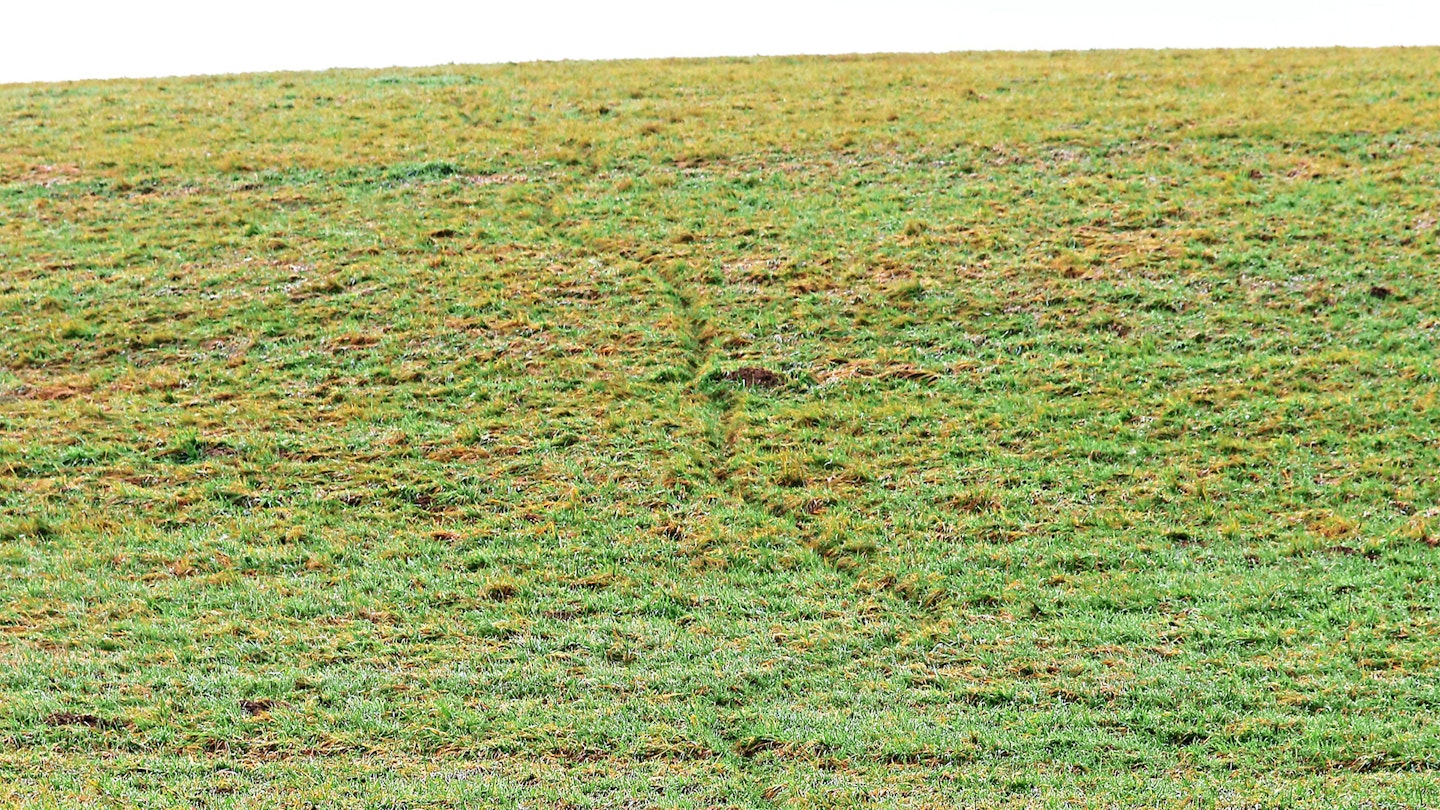
Soft mud, fresh snow and damp sand all capture the press of paw, hoof and claw as animals go about their lives. The type, size and shape of a print, how many toes and whether they’re clawed, are all clues to what walked this way.
So too is the habitat and location in which you found it (a grizzly bear in Northamptonshire: probably not). Tracks can be faint, so to maximise detail try sideheading: tilt your head over and low to the ground and look across the print, keeping the light source on the opposite side.
A trail of prints reveals even more. The distance apart can reflect both the animal’s size (breadth and length) and the speed it was moving; the pattern can show whether it was hopping, walking, trotting or galloping.
Most tracks vanish fast as snow melts and earth is retrodden, but some survive millions of years (the odd dinosaur footprint turns up occasionally). Here are some of the most common tracks you can spot.
Badger
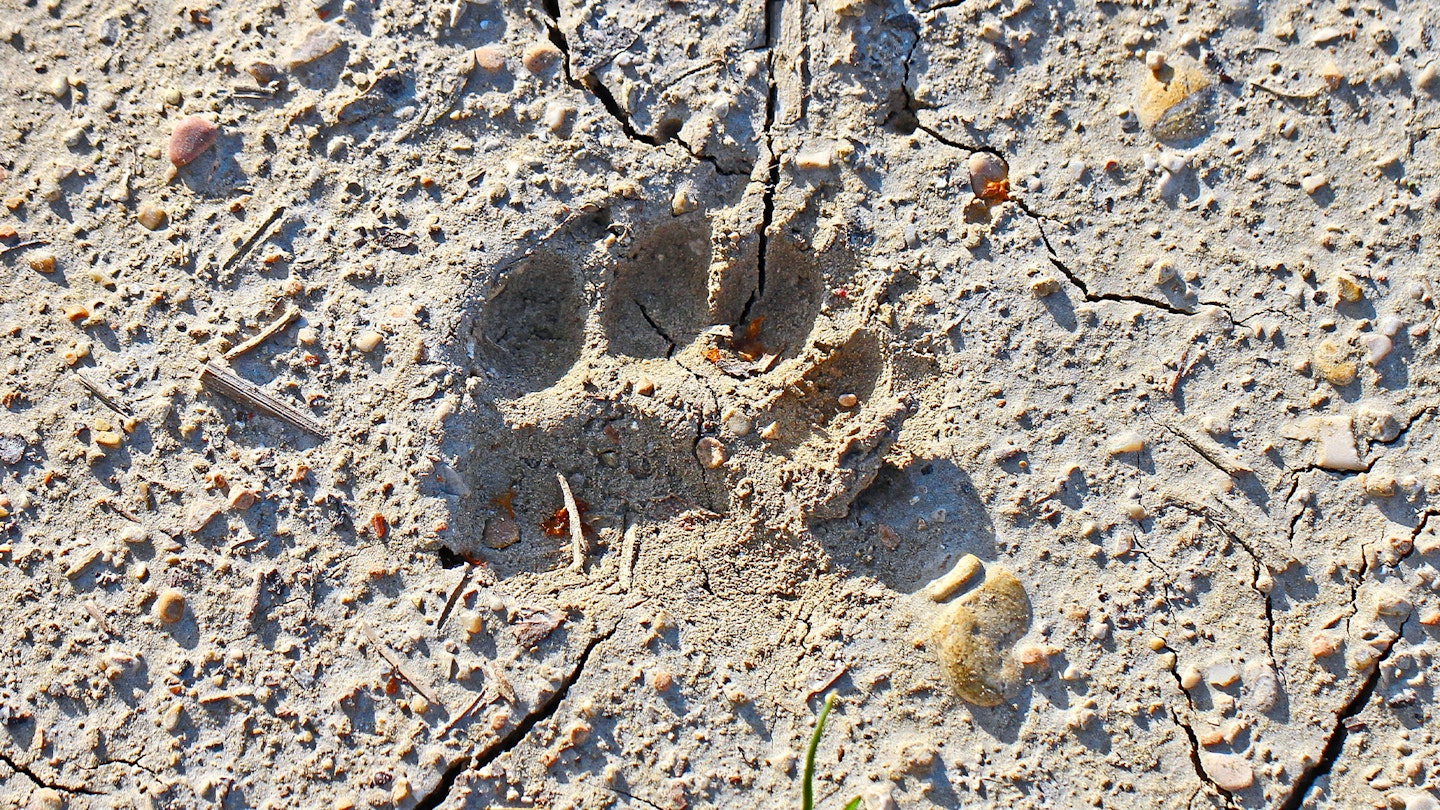
The monochrome-themed nocturnal shuffler leaves a heavy print, 2½ inches across with five toes lined in front of a wide rear pad, and long digging claws on the forefoot.
Fox

These canines practise perfect walking, which means they often step the rear foot exactly into the print of the front one. The four-toed tracks are similar to pet dogs, although a fox’s tend to be slimmer.
Otter
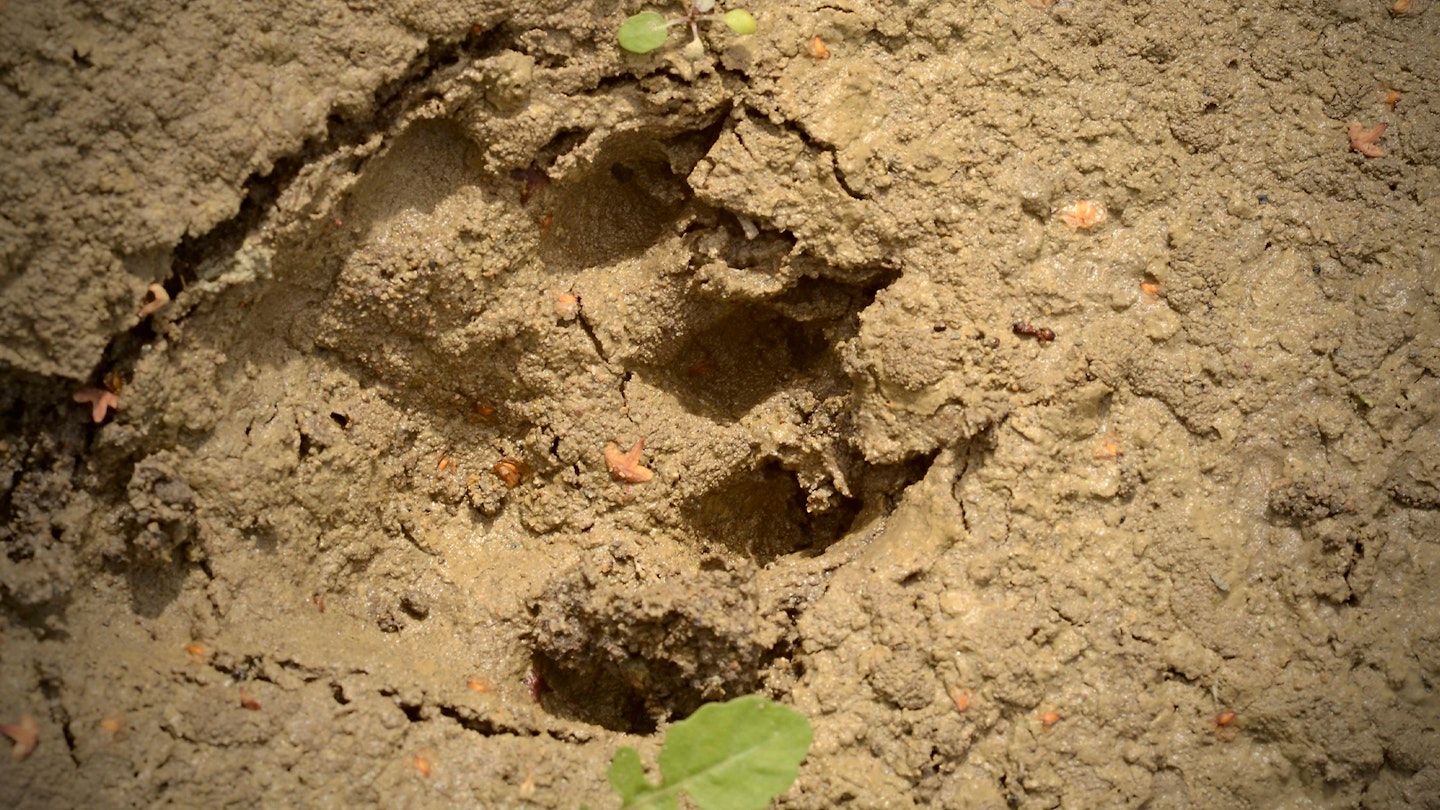
Look for five-toed, webbed prints up to 3½ inches long in soft riverbanks or short-cutting across bends. You may also see a line between the footprints, where its tail has dragged.
Deer
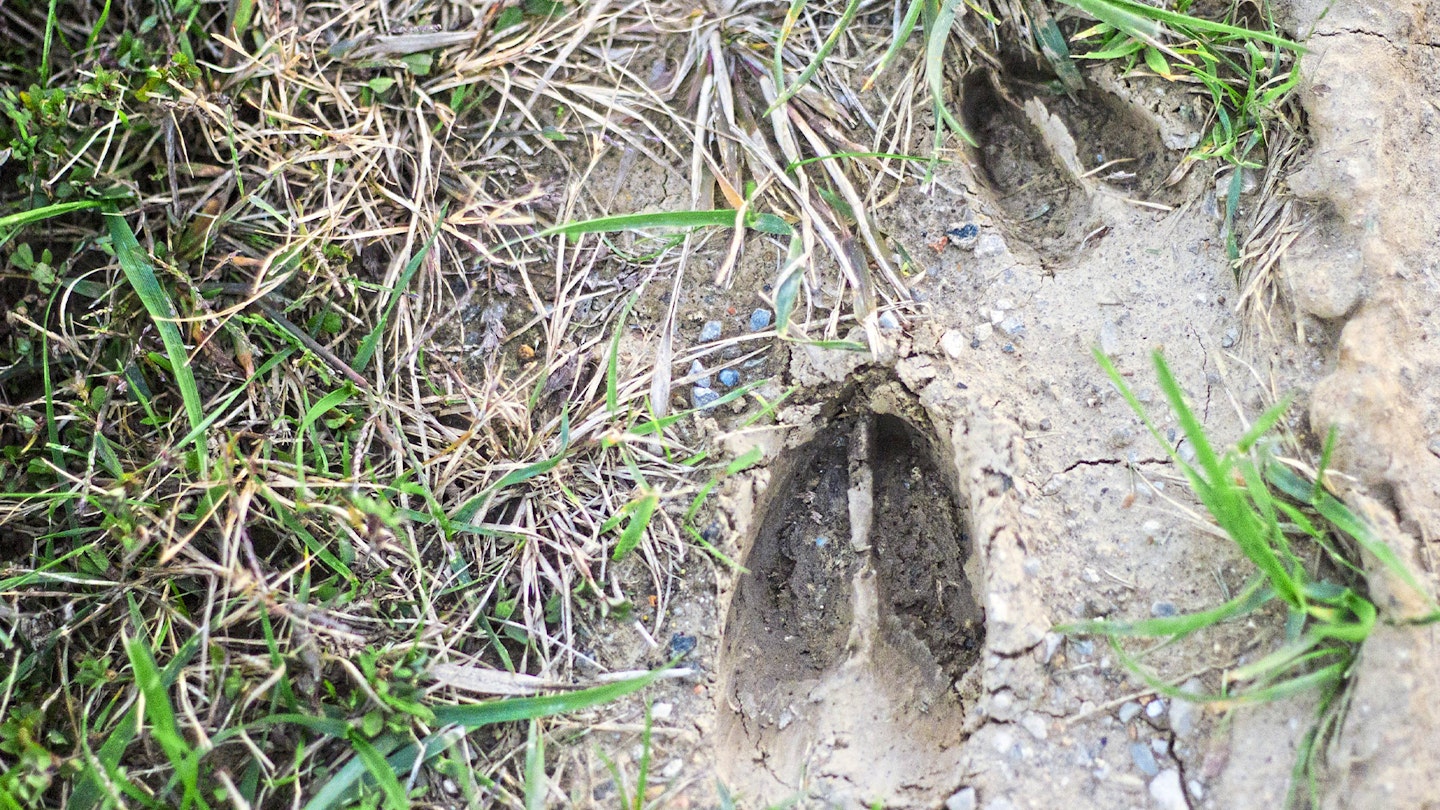
Like sheep they have cloven hooves, though deer prints tend to be pointier at the front. Hoof size ranges from the red’s 3½-inch clodhopper to the muntjac’s 1-inch ballet slipper.
Birds
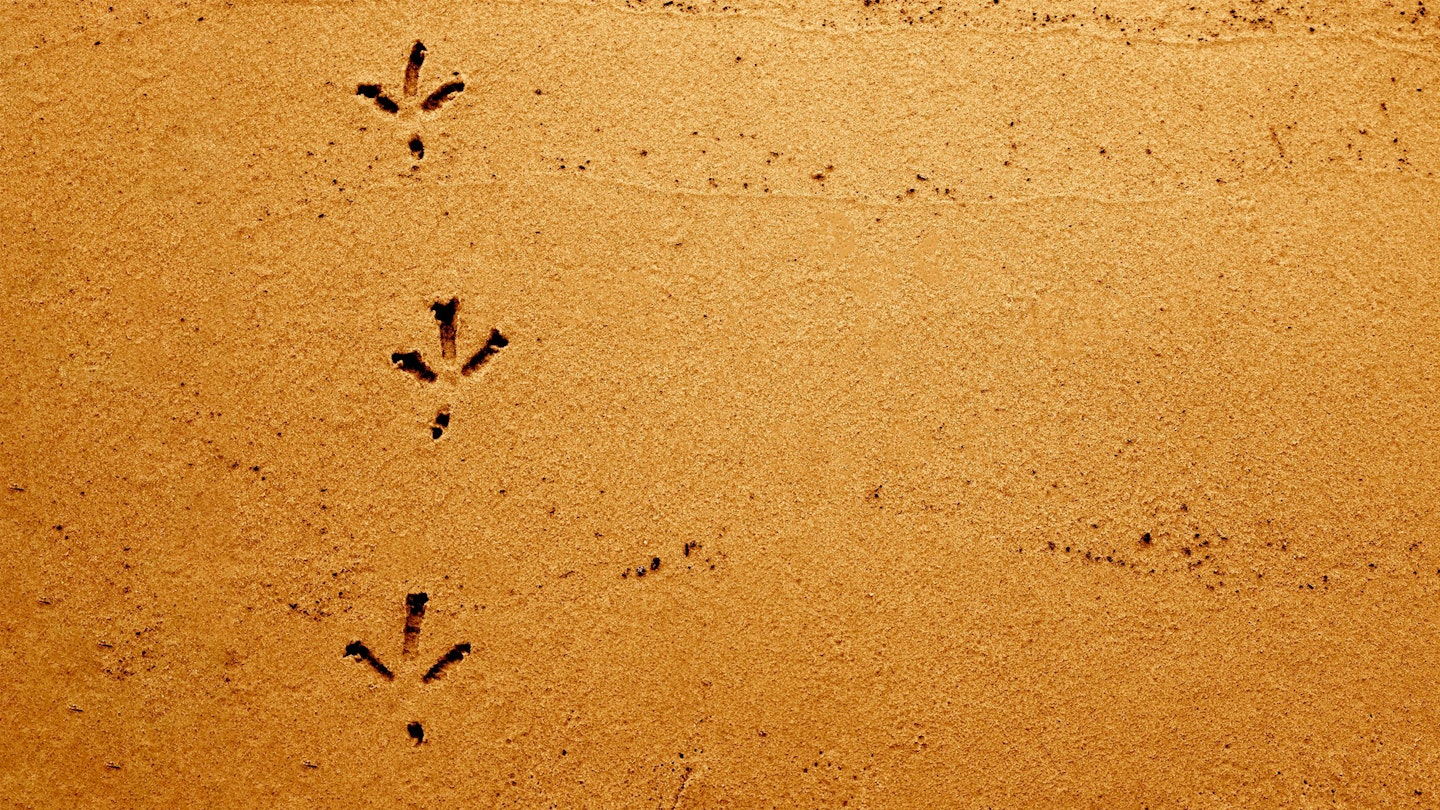
Most perching birds leave classic three-claws-forward and one-claw-backward prints (like this one from a crow), although a few have two and two (cuckoos, woodpeckers), while ground birds often have a truncated rear claw (pheasants, partridges) and swimmers have webbing (ducks, swans).
2. Burrows and tunnels
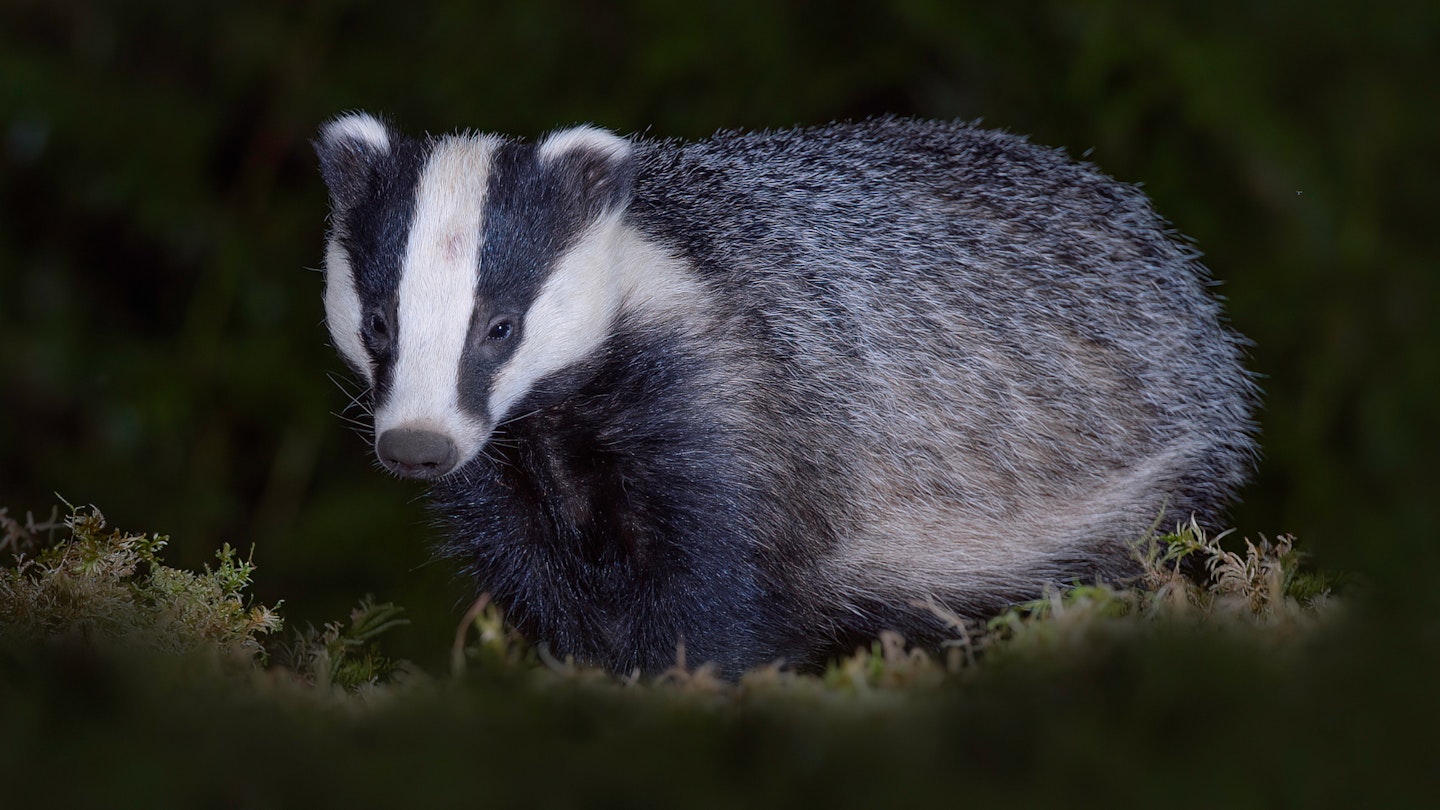
Some critters seek safety underground, leaving just a tunnel entrance as a sign of what lies beneath. Size is an obvious indicator, from tiny mouse and vole holes, to rabbits, to badger tunnels which can be over a foot across.
Look at shape too: badgers dig holes wider than they are tall, with a flat base; rabbits and foxes tend to make rounder tunnels. Excavation is hard work though, so animals often move into others’ burrows: stoats take over the homes of their prey, while badgers sometimes live alongside lodgers like woodmice, rabbits or even foxes.
3. Paths
Put enough footprints together and a path is worn. Many animals including badgers, foxes, deer, otters (and sheep) forge visible routes through woods, fields and over moors. In fact, different creatures will often share the same superhighway: after all, they – just like us – save energy on the path of least resistance.
Routes tend to run between favoured sleeping and feeding spots, and what happens when path meets obstacle can hint at size, and whether the animal went under, over or round.
4. Herbivore nibbles
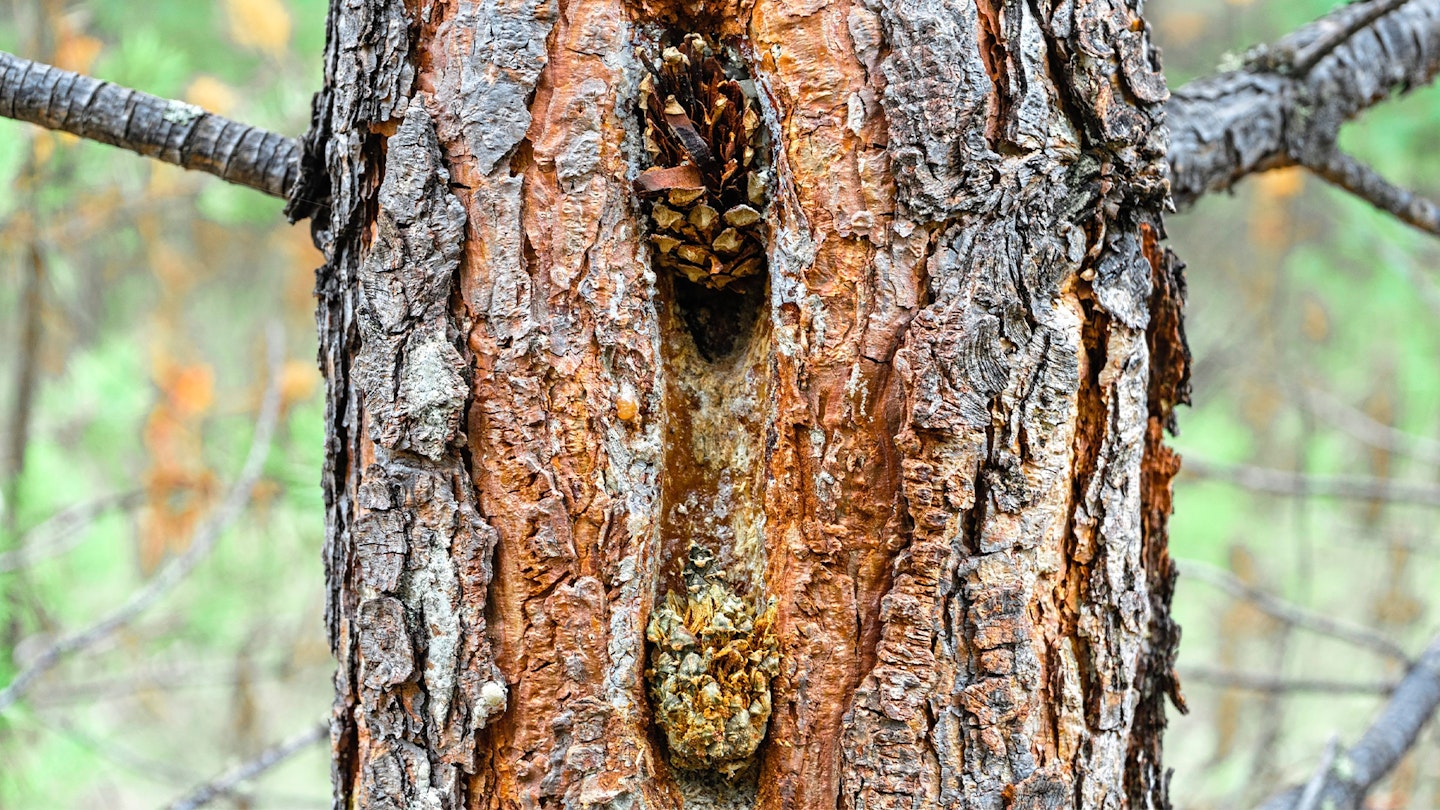
Like plates abandoned at a picnic, the countryside is littered with remnants of critter meals: nibbled pine cones, chewed apples, cracked hazelnuts. And different species have recognisably different table manners.
Take a pine cone. Squirrels gnaw the tough scales off to get to the seeds, leaving a core behind; crossbills expertly prise the scales open with their cleverly-shaped beaks; woodpeckers wedge a cone into a bark crevice and hammer it to a shaggy mess (favourite trees for this are known as workshops).
5. Carnivore nibbles
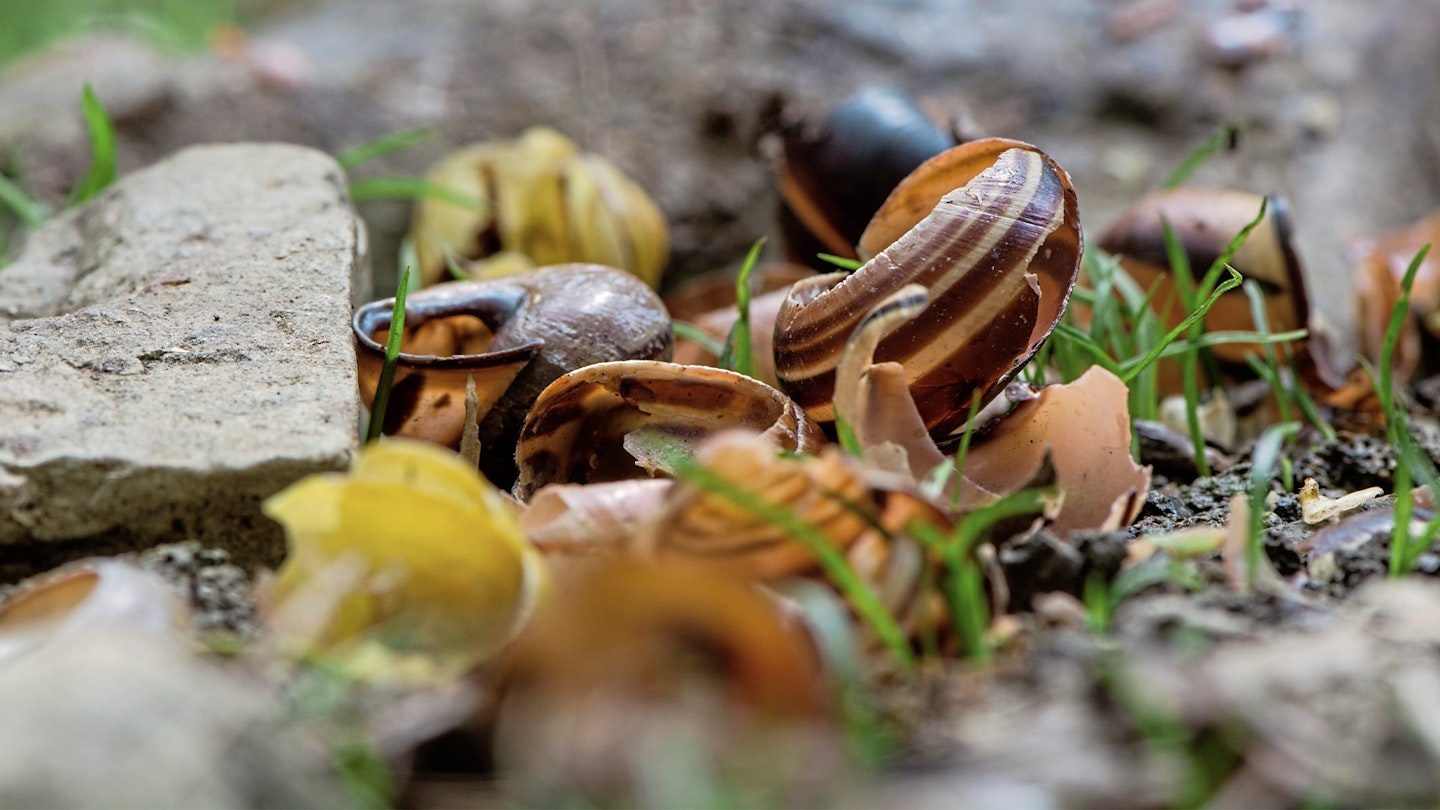
Meat eaters are messy too: broken snail shells by a rock indicate a song thrush has been smashing and feasting; a bird with head torn off is probably the work of a raptor; the hind legs of a rabbit were probably left by a fox. Predators often eat small animals whole, leaving no bones, but some, like owls, then regurgitate pellets of matter they can’t digest, which can include identifiable skulls.
6. Feathers
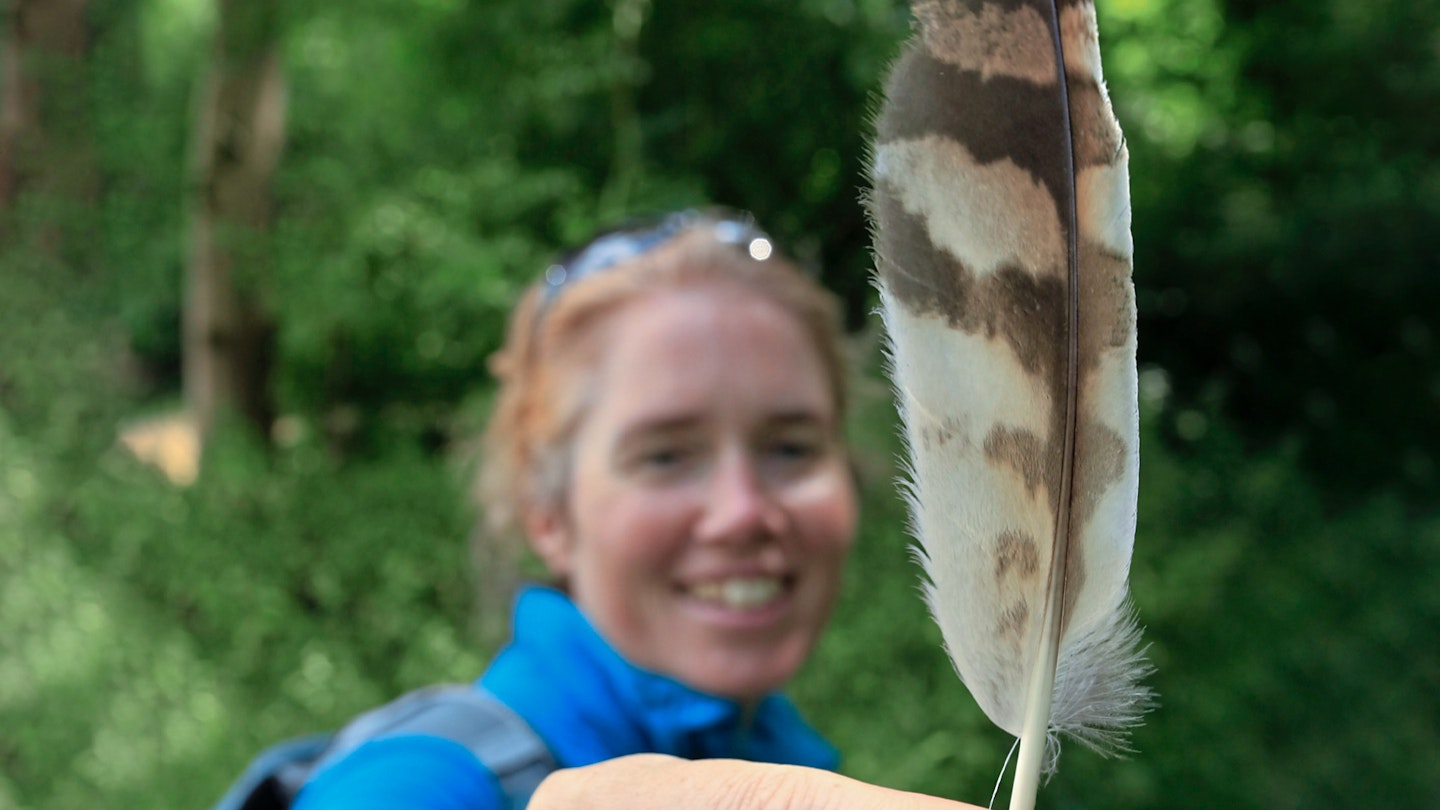
A bird’s loss can be a walker’s treasure. Some feathers can be hard to identify, but others are strikingly distinctive: the jay’s has sky-blue barring; the great spotted woodpecker’s has big white-on-black dots down each edge; the tawny owl’s (pic) is striped cocoa and oatmeal and soft to the touch; the primary feather of a golden eagle can be over 20 inches long.
A good time to feather-hunt is late summer when many birds moult; if you want to collect seriously, keep a long tube in your pack for safe transport.
7. Nests

The countryside is full of animal houses and the ones you’re most like to spot are bird nests. Where they build (robins near the ground, rooks in treetops, house martins under the eaves of buildings) and what they build with (swallows like mud, buzzards like twigs and branches) offer clues to species, as does the labour involved.
Long-tailed tits work for three weeks on an ovoid masterpiece of moss, lichen and spiderweb (which lets the nest expand as the chicks grow) cosily lined with over 2000 feathers. The wood pigeon, on the other hand, hurls together a twiggy platform so rickety you can often see the eggs from below.
8. Hair and fur
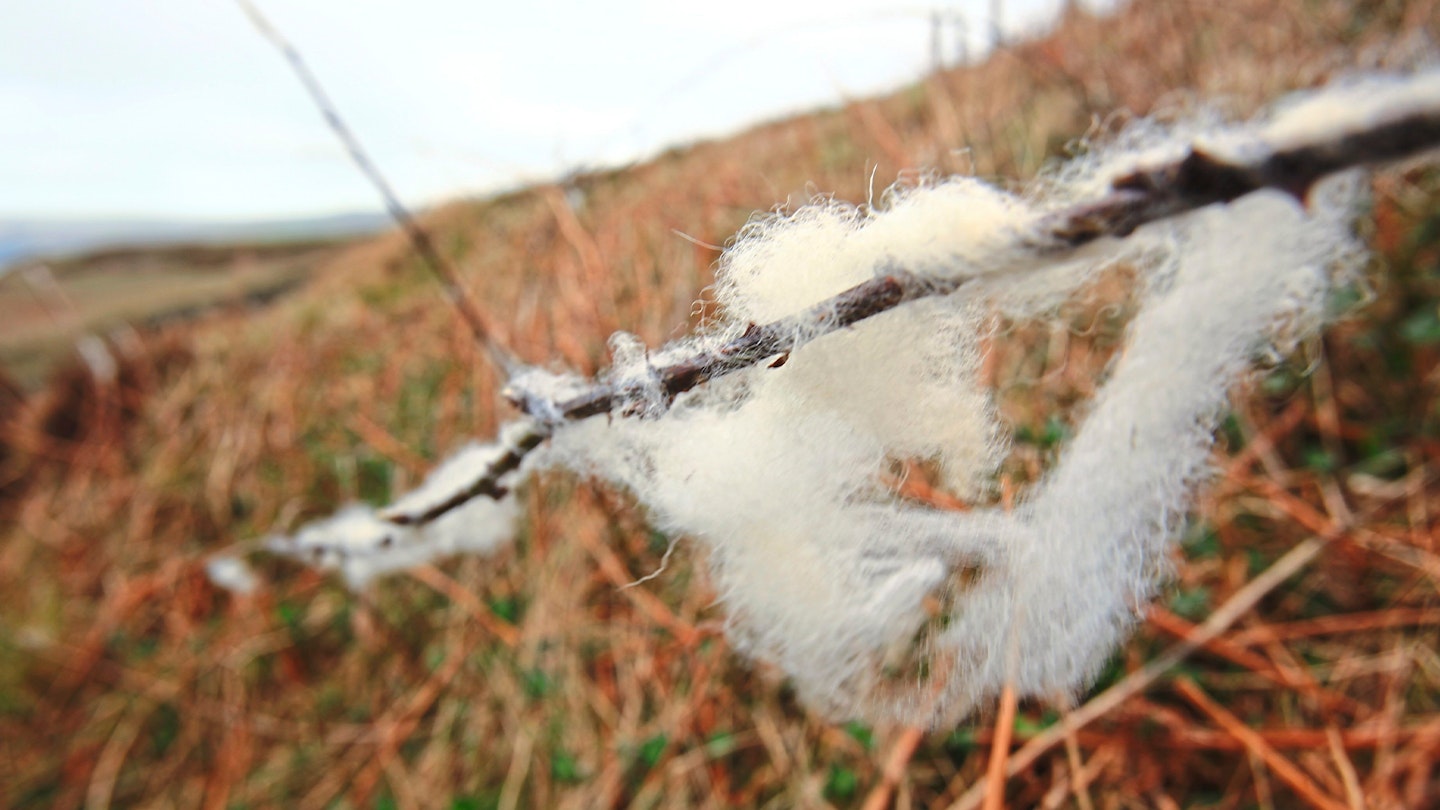
The blackberry-pickers and fence-hoppers among us aren’t the only ones to get snagged on brambles and barbed wire: critters often lose hair and fur.
The floss of sheep wool is easily identifiable, as are the long threads of a horse’s mane or tail. Badger hairs are about three inches long, wiry and white with a black band; rabbit fur is fine, soft and short. And the height you find it is indicative too.
And last but not least…
Scat.

Sure, looking at poop isn’t everyone’s idea of a good time, but shape, colour and consistency can be very revealing. Rabbits and hares leave hard, round pellets; fox scat has a distinctive twist at the end; otters leave slimy spraints on prominent boulders to define their territory.
A close look can reveal what’s been on the menu: bird droppings turn purple in berry season, while otter spraint might be full of fish scales or crayfish parts, depending what it’s caught. And it doesn’t all whiff: some have compared the scent of otter poop to jasmine tea.
So uh, there you go, I guess. How to spot an animal by... any means necessary.
We love to see wildlife out and about, and even checked in on Britain's largest rewilding project the other day, which truly gave us cause to be hopeful about the future landscape of these fair isles.
About the author

Jenny Walters has been writing for Country Walking magazine for almost 20 years. She's tramped in New Zealand, trekked in Peru, hiked in the Alps and walked all over the British Isles, from Cape Wrath to Cape Cornwall, Mount Brandon to Yr Wyddfa.
